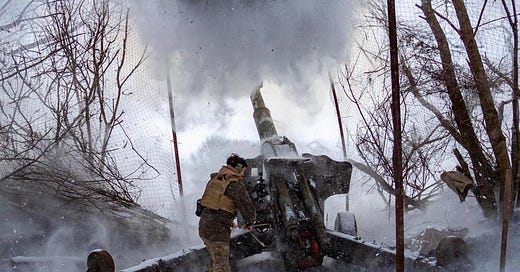The recent first snows and rains, the winding down of Ukrainian offensive operations (but not their cessation) as well as the latest surge in Russian air and missile attacks, highlight a change in phase that is taking place in Ukraine. The war has now shifted into the Winter 2023-2024 campaign.
Forecasts for winter this year indicate that this winter will have similar temperatures and precipitation levels as last year. There will be some cold weather, some wet weather, some overcast weather and some mud. All of these have an impact on the planning for, and execution of, military operations as well as humanitarian support to displaced Ukrainian citizens.
But climatic conditions are only one consideration for the Ukrainian and Russian high commands as they enter the third winter of the war since the large-scale invasion by Russia in February 2022. Political and diplomatic considerations, the war in Gaza, Chinese aggression in the West Pacific and the U.S. 2024 Presidential campaign are all shaping the thinking of Ukrainian and Russian leaders and strategists as the winter campaigns of 2023 commence.
But, before looking at the respective strategies of each country for this winter, what are the key differences in the war as we enter the winter of 2023 compared to this time last year?
The Differences from Winter 2022
The Russians entered winter last year reeling from their defeats in Kharkiv and Kherson. Under then overall commander, General Surovikin, the Russian forces shifted to a defensive strategy in order to preserve their remaining combat forces while absorbing mobilised troops and preparing for 2023 operations. This was abruptly upended halfway through the winter when General Gerasimov was appointed overall commander and shifted onto the offensive very quickly. This year, unless there is a drastic reversal in fortunes for the Russians (and probably not even then), there will be continuity in the overall leadership of Russia’s invading forces.
A second difference is that this year, Ukraine has a greatly expanded operational and strategic strike capacity. Since 2022, Ukraine has continued to improve its capacity to undertake operational and strategic strike campaigns. The operational strike campaign, seeking to interdict Russian logistics, reinforcements and battlefield command and control, is utilising long range missiles, including HIMARS, Storm Shadow and SCALP air-launched missiles.
While strikes on Russia’s Crimean military infrastructure – the Black Sea Fleet docks and HQ, air defence and logistics nodes – have been important, these are yet to degrade Russia’s Dnipro and Southern Grouping of Forces to the degree where a Ukrainian breakthrough is possible. And improved Russian electronic warfare is decreasing the effectiveness of many Ukrainian longer range strike munitions.
Keep reading with a 7-day free trial
Subscribe to Futura Doctrina to keep reading this post and get 7 days of free access to the full post archives.




